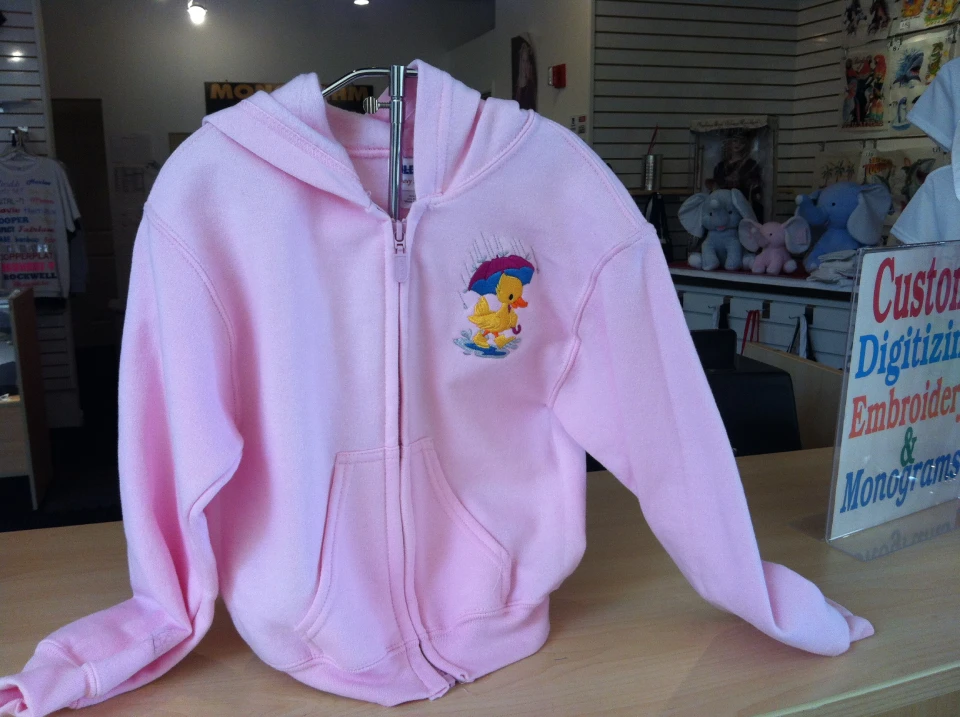The Art of Custom Needlework: Unlocking the Secrets to Creating Special and Remarkable Styles
Embroidery, a craft steeped in custom and creativity, holds within its detailed stitches the power to transform fabric right into a canvas of unique expression. The secrets to producing customized embroidery designs that captivate the eye and leave a long lasting perception lie in a delicate balance of method, imagination, and interest to information. As we explore the world of customized embroidery, we discover the nuanced interaction in between string choice, stitch complexity, and design personalization that elevates a mere garment to an artwork. Join us on a trip via the art of customized embroidery as we decipher the mysteries behind crafting truly unforgettable and unique productions.
Selecting the Right Needlework Threads
When picking needlework threads, what crucial factors should you think about to make certain the most effective results for your custom-made layouts? The choice of embroidery string is important in establishing the final result of your stitched style. One of the main factors to consider is the material of the thread. Different materials such as cotton, polyester, rayon, and silk offer varying levels of shine, resilience, and structure. It is important to pick a thread material that complements the material you are embroidering on and lines up with the desired look of the design.
Thicker strings can add dimension and texture to your layout, while finer strings are optimal for intricate information and little text. Additionally, taking into consideration the color fastness and washability of the string is critical to ensure that your personalized styles maintain their high quality and vibrancy over time.
Exploring Various Stitch Techniques
To delve right into the realm of 'Checking out Different Stitch Techniques', one should grasp the ins and outs and nuances that each sewing method offers the art of needlework. Different stitch strategies not only include visual rate of interest however also add to the total structure and measurement of the design. One prominent stitch technique is the satin stitch, which entails closely jam-packed parallel stitches to create a smooth and glossy surface, suitable for loading in shapes and producing bold outlines.
On the various other hand, the backstitch is a functional technique typically utilized for describing and including great information. It involves stitching backwards to create a solid line of embroidery. Furthermore, the French knot stitch includes a tactile component to styles, excellent for creating textured accents like flower centers or ornamental touches.
Exploring different stitch methods enables embroiderers to play with light, darkness, and depth within their styles, raising the aesthetic allure and imaginative top quality of their needlework jobs. By grasping different sewing techniques, one can unlock endless possibilities i loved this for creating distinct and unforgettable custom needlework items.
Incorporating Personalized Style Aspects
Having discovered the details of different stitch strategies such as the satin stitch, backstitch, and French knot, the emphasis now changes in the direction of incorporating customized layout aspects in customized needlework jobs. Personalized layout aspects play an important role in making needlework projects absolutely special and memorable.
An additional method to include individualized design components is by including icons or themes that hold unique significance to the recipient or reflect their passions and personality. Including a preferred blossom, animal, or hobby-related symbol can make the needlework design extra significant and customized. In addition, choosing shades that reverberate with the recipient or align with the designated theme can better improve the personalization of the needlework job.
Understanding the Art of Color Sychronisation

One secret ladies tailor near me now aspect of color coordination is recognizing color concept. This consists of understanding just how various colors connect with each other, the feelings they convey, and exactly how they can be incorporated to develop aesthetically appealing styles. By applying color concept principles, embroiderers can develop harmonious color schemes that enhance the general appearance of the style.
Additionally, taking note of comparison is important in shade coordination. Using contrasting shades can help particular elements of the layout pop, boost clarity, and produce a visually vibrant embroidery piece. By grasping the art of shade control, embroiderers can boost their layouts and produce unforgettable items that reverberate with customers and viewers alike.
Enhancing Structure With Advanced Embroidery Stitches
Bullion knots, on the other hand, can be used to create twisted, ropelike elements that include an extravagant feeling to the needlework. Exploring with these sophisticated embroidery stitches allows you to push the boundaries of standard needlework and develop absolutely distinct and visually attractive structures in your designs.
Conclusion
To conclude, the art of custom-made needlework includes a mix of selecting the best threads, discovering different stitch methods, incorporating personalized design elements, grasping shade sychronisation, and enhancing go to this web-site appearance with sophisticated stitches. By understanding and implementing these vital components, embroiderers can develop special and memorable layouts that showcase their creative thinking and skill. Needlework lovers can unlock the keys to producing gorgeous and custom pieces that stick out and leave a long lasting impact.